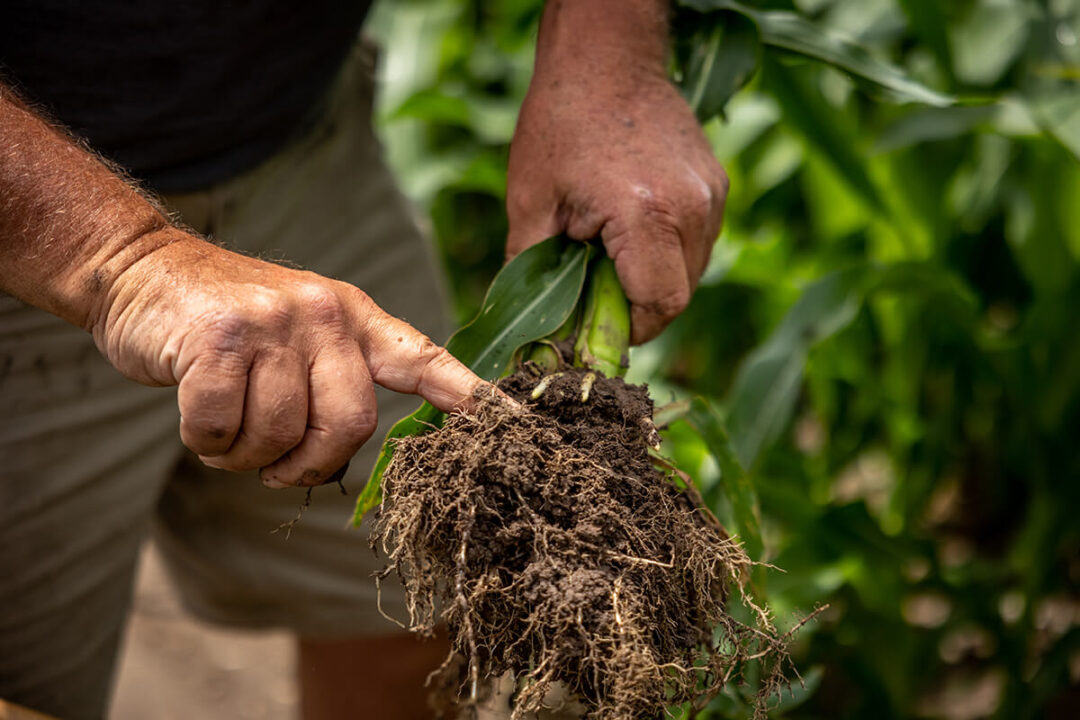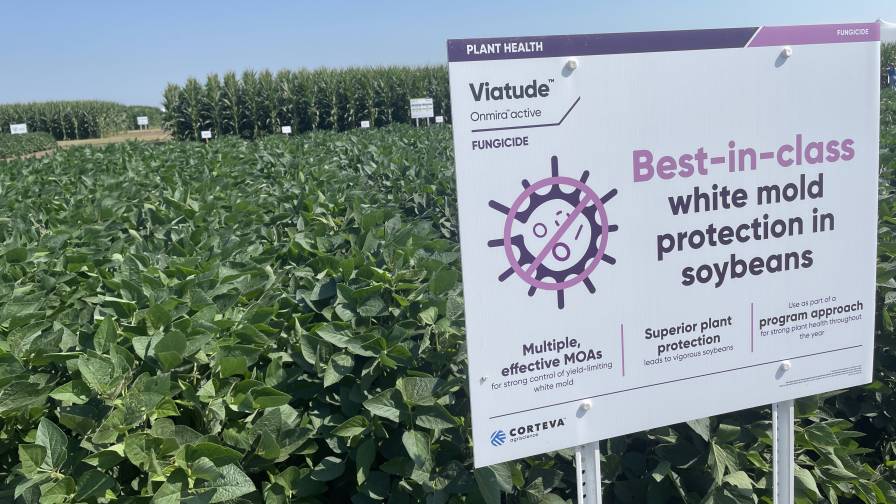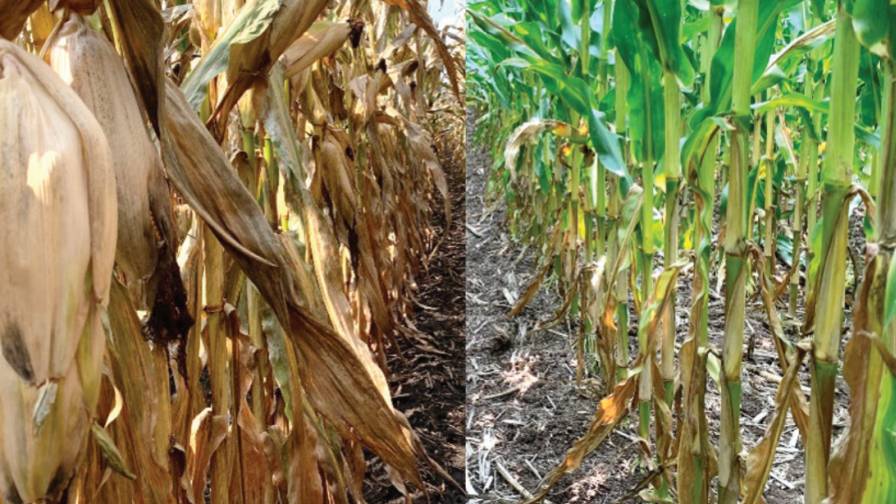Fungicide Applications a Matter of When, Not If
The crop protection industry continues to grow as declining arable land and a burgeoning population leads to more food production. Fungicides are part of this rising tide — a market currently estimated at $22 billion is expected to reach over $29 billion by 2029.
Fungicides are typically utilized in combination with other chemicals as a seed treatment, in-furrow application or foliar spray. In recent years, the conversation has shifted from the necessity of fungicide use to exactly how they should be harnessed during a growing season, say experts interviewed by CropLife® magazine.
Although fungicides are frequently applied in disease-friendly wet weather, a call for increased crop yield requires their use even when conditions are dry, notes Kim Tutor, Technical Marketing Manager for BASF.
“Last year was hot and dry, making 2023 a low disease pressure year,” says Tutor. “But those diseases are waiting to spread with the right environmental conditions. We saw late season tar spot in corn, so you never know what kind of stress is going to be hitting your crops. It pays to be proactive rather than reactive — planning that fungicide application now will help you hedge your bets.”
The industry’s exponential growth dates back several years, with 2021 a landmark for use of branded products over generic. That year, about 33% of all treated corn acres employed mid-tier or higher fungicides, Tutor says.
“It all ties back to what growers are seeing in terms of yield, performance and consistency,” Tutor says. “That’s why there’s been a jump from lower-level brands to premium fungicides.”
Figure It Out
Fungicides are organisms or chemical compounds used to kill or inhibit fungal spores. Usually produced as a spray or dust, these products control plant-damaging rusts, mildews, blights, and molds. Although fungicides are designed to reduce energy production in fungal cell membranes, their best use is before disease symptoms present themselves.
Even as growers proactively incorporate fungicides into their business plans, diagnosing plant diseases makes adding these solutions tricky, says Corteva Market Development Specialist Jeff Moon.
For starters, farmers must be familiar with disease symptoms as well as look-alike symptoms. A Minnesota resident, Moon sees tar spot — a disease caused by the fungus Phyllachora maydis — in local corn grows. Meanwhile, white mold appears in soybeans in midsummer when plants are beginning to flower.
Maladies such as frogeye leaf spot and Northern corn leaf blight also have a negative impact on crops, requiring growers to plan for these problems weeks or even months in advance, says Moon.
“It takes some expertise to figure out a disease,” Moon says. “For white mold, you have to be proactive and not wait for it to show up before you treat it. Take action before it causes a problem, even though that’s hard to do.”
Education is a key facet of any crop protection program. Reaching out to fellow growers now can take the mystery from disease identification and mitigation during the growing season, Moon says.
“Other farmers will know how a disease is progressing every year,” says Moon. “That will be on their radar and become something for growers to think about, so it’s important to rely on that network. Farmers in Nebraska will have different problems than farmers in Minnesota and Wisconsin because of geography. Every grower knows the things to keep an eye on in their area.”
Maximizing Plant Potential
Fungicides should be integrated into a plan alongside insecticides and weed-killing herbicides, adds Moon. New products like Viatude — a Corteva-produced white mold control solution — combine multiple modes of action to effectively surround, penetrate, and protect plant leaves and stems.
Corteva also suggests pairing Viatude with its Aproach broad-spectrum fungicide for resistance management and even stronger year-round protection against white mold.
“Our research and development team is always looking for new ways to deliver products that are effective, easy to use, and have minimal environmental impact,” says Moon. “Our core areas in the Midwest revolve around corn and soybeans. We know these diseases because they always pop to the top.”
Growers nationwide doubled their fungicide applications between 2019-2023, says Sabih Javed, Broad Acre Fungicide Manager at Bayer. Hikes in commodity prices — along with environmental challenges and disease emergence — helped center these products in farmers’ minds.
“When you have those high prices, growers are going to do everything they can to protect their crop,” Javed says. “Generally speaking, fungicides are the fourth or fifth thing you think about (in a crop protection program). But you’ll be thinking about fungicides when you see the devastation a disease can cause in a high-commodity price environment.”
Crop health is another driver for farmers now turning more frequently to fungicides. Maximizing plant potential via thicker stalks and greener leaves even has producers purchasing more product than they need, says Javed.
Nor have recent drought conditions curtailed farmers’ buying habits, largely due to disease increase and the overall efficacy of Bayer products like Delaro Complete, which blends three modes of action for consistent corn and soybean disease control. At a lower price point is Absolute Maxx, a solution used primarily in corn and cereals.
Fungicides should be utilized midway through the growing cycle rather than as a pre-application, Javed says.
“You can’t apply too early because then you’d lose residual activity,” says Javed. “Growers don’t want to spend tons of money, so they have to balance when to buy and when to spray. Plus, it’s important to think about fungicides not just by themselves, but how they can be used with other chemicals. For example, when using an insecticide at the same time, can you apply a fungicide along with it to save on application costs?”
A Growing Suite of Benefits
Farmers need the occasional nudge to understand the potential impact of fungicides, notes Javed. To that end, Bayer has a guarantee program that offers growers rebates if they don’t see value in the company’s products. Program participants must have an active subscription to Climate FieldView, a software platform that helps producers identify performance differences in their crop.
Tutor, the BASF official, expects stresses from past years to stay at the fore in 2024. Diseases including tar spot, gray leaf spot, and white mold will remain top of mind. Positive product performance has farmers buying fungicides during pre-pay season, a far cry from a decade ago when the last dollar spent would go to these solutions.
In 2023, BASF introduced Revylok for soybeans, delivering a long-lasting curative along with preventative control against a broad spectrum of diseases, says Tutor.
“As growers test out BASF fungicides, they’re seeing other benefits in terms of environmental stress mitigation, improved growth efficiency, plus that disease control,” Tutor says. “Those benefits exist regardless of the pressures they’re experiencing. Farmers want to feel confident when they’re putting fungicides on the field, they know they’re doing their best to protect their investment.”
Revylok’s formulation includes Revysol, a patented active ingredient known for its binding affinity within the plant. Ease-of-use includes support of aerial applications, which are advantageous for wet fields and can cover large acreages in a shorter span than ground spraying, Tutor says.
Syngenta is similarly supportive of drone and fixed aerial spraying for corn, says Technical Product Lead, Tyler Harp.
“A large part of the market is aerial, because plants are too tall to go over with a ground rig,” says Harp. “Drones can open up this bottleneck of logistics where we’re treating millions of acres around the same period of time.”
Miravis and other Syngenta fungicides perform well in drone conditions, due to premium concentrations that can be used at low volume with the correct amount of water. Multiple modes of action (MOA) are critical, considering it can take up to a decade to bring a new MOA to market, says Harp.
The greatest yield benefit from a fungicide is at the VT-R1 (tasseling to silking) growth stages, a time when both crop-damaging diseases and beneficial plant tissues are most active.
“Using premium fungicides is more important than timing, because then you have better flexibility,” says Harp. “(Chemicals) will bind to the wax layer of a leaf rather than be metabolized. You have more margin for error.”
Though Syngenta has no new products for 2024, the company is formulating fungicide solutions that control a broad range of diseases while staying a step ahead of ever-evolving pathogens. Companies in the fungicide space must remain ahead of high-yielding hybrids and a changing treatment pattern that, for Syngenta, increased from one million corn acres in the 1990s to 30 million acres today.
New fungicide solutions will continue to penetrate the marketplace, no matter what population or environmental stressors present themselves in the years ahead, says Harp.
“Benefits are not just about managing disease severity but improving crop efficiency in the face of abiotic and biotic stresses,” Harp says. “Fungicides are longer lasting, and have a stronger and more potent ability to preserve yield in the presence of heat or dry conditions. Growers getting good value from a fungicide in one season are making a commitment to use these products as part of their agronomic practice.”







